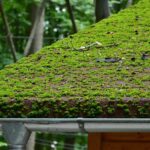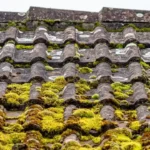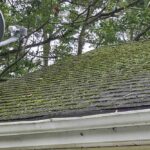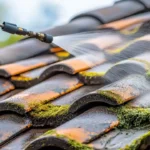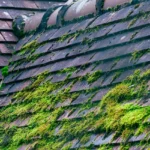Water damage is one of the most common issues that homeowners face with their roofs. Understanding the methods on how to protect your roof from water damage is essential to maintaining the integrity and longevity of your home. Whether it’s from rain, snow, or ice, water can cause significant harm if not properly managed. In this article, we will explore various strategies to safeguard your roof and keep your home safe from water-related issues.

Understanding the Causes of Roof Water Damage
Before diving into solutions, its crucial to understand what causes water damage to a roof. Common causes include poor drainage, blocked gutters, damaged shingles, and inadequate roof ventilation. Identifying these issues early can save you from expensive repairs down the line.
Identifying Poor Drainage
Poor drainage can lead to water pooling on the roof, which over time can cause leaks and structural damage. Clogged drainage systems are a common culprit, so regular maintenance is essential.
Recognizing Blocked Gutters
Gutters that are blocked with leaves and debris can cause water to overflow, leading to potential roof damage. Cleaning your gutters regularly is a simple yet effective way to prevent this issue.
Regular Roof Inspections
Conducting regular roof inspections is a proactive approach to preventing water damage. Look for signs of wear and tear, such as cracked or missing shingles, and address any issues immediately. You can use a roof inspection checklist to ensure nothing is missed.
Spotting Damaged Shingles
Damaged shingles are a common entry point for water. Replacing them promptly can prevent leaks and further damage.
Checking Roof Ventilation
Proper roof ventilation helps prevent moisture buildup that can lead to mold and rot. Ensure that your attic has adequate ventilation to keep moisture at bay.
Maintaining Your Roof
Maintenance is key to protecting your roof from water damage. This includes keeping your roof clean, sealing any cracks, and applying protective coatings.
Cleaning Your Roof
Regular cleaning of your roof can prevent the growth of moss and algae, which can trap moisture and lead to damage. Use appropriate cleaning solutions to keep your roof in top condition.
Sealing Cracks and Leaks
Inspect your roof for any cracks or leaks and seal them with a suitable sealant to prevent water infiltration.
Applying Roof Coatings
Consider applying a reflective roof coating to protect your roof from UV rays and water damage.
Investing in Quality Roofing Materials
Investing in high-quality roofing materials can provide better protection against water damage. Choose materials that are durable and designed to withstand your local climate conditions.
Choosing the Right Shingles
Select shingles that are suitable for your areas weather patterns, ensuring they offer adequate protection against rain and wind.
Installing a Reliable Drainage System
A reliable drainage system is essential for directing water away from your roof. Consult with professionals to design and install a system that meets your homes specific needs.
For more detailed information on drainage systems, you can visit this guide.
Preparing for Extreme Weather
Preparing your roof for extreme weather conditions is crucial in preventing water damage. This includes reinforcing your roof structure and ensuring proper insulation.
Reinforcing Roof Structure
Strengthening your roof structure can help it withstand severe weather, reducing the risk of damage.
Ensuring Adequate Insulation
Proper insulation can prevent ice dams from forming, a common cause of roof leaks in colder climates.
Emergency Roof Repairs
In case of sudden water damage, knowing how to perform emergency roof repairs can minimize further damage until professional help arrives.
Temporary Leak Fixes
Using tarps or temporary sealants can provide a short-term solution to leaks, protecting your home while you arrange for professional repairs.
Conclusion
Protecting your roof from water damage involves a combination of regular maintenance, quality materials, and preparedness for extreme weather. By following the strategies outlined in this article, you can ensure your roof remains in excellent condition, safeguarding your home against water-related issues.

FAQs
How often should I inspect my roof?
It’s recommended to inspect your roof at least twice a year, preferably in the spring and fall.
What are the signs of water damage on a roof?
Look for water stains, mold growth, and damaged shingles as signs of water damage.
Can I perform roof maintenance myself?
While some tasks can be done by homeowners, it’s advisable to hire professionals for thorough inspections and repairs.
This article contains affiliate links. We may earn a commission at no extra cost to you.




